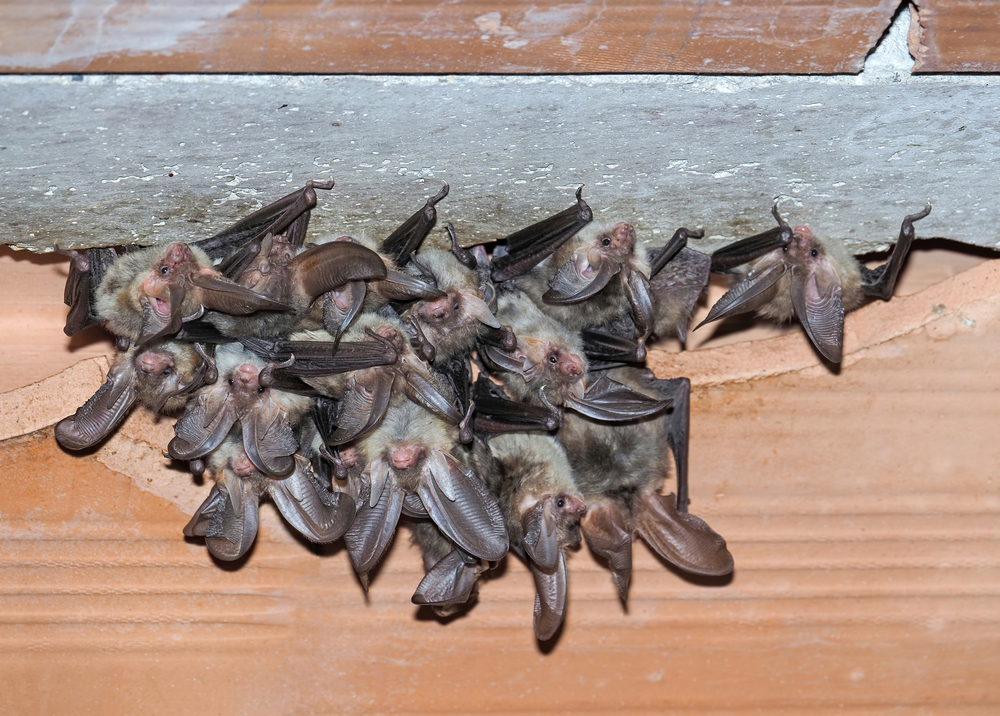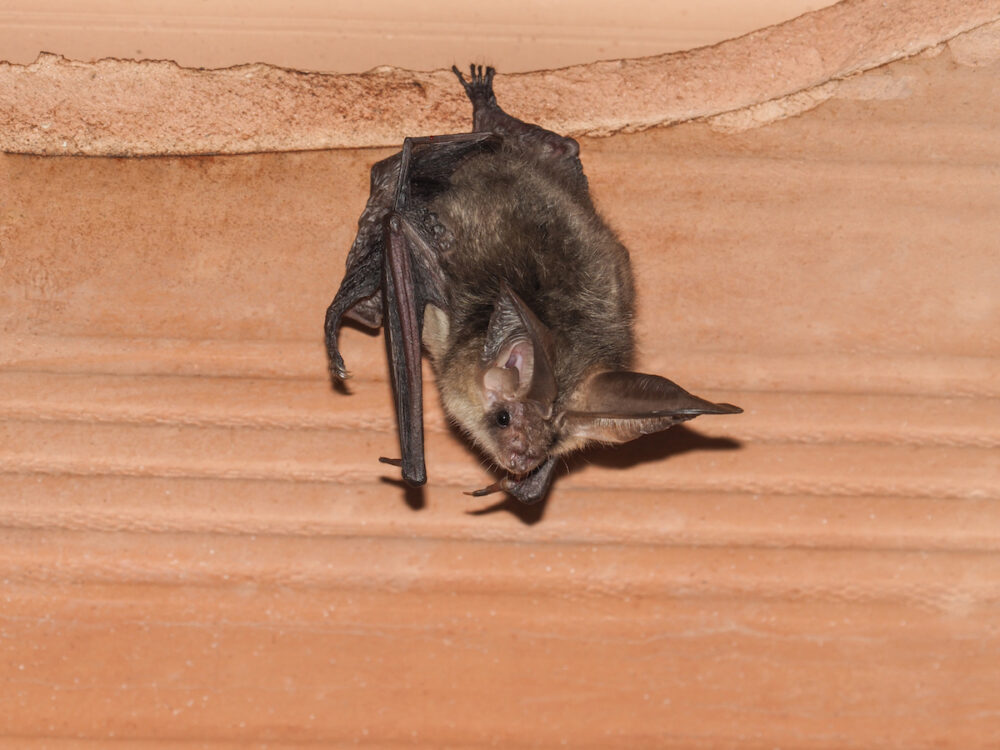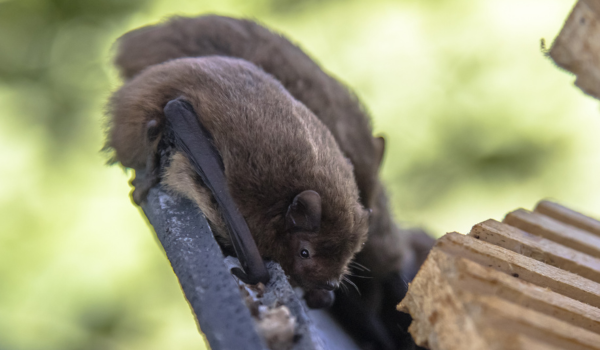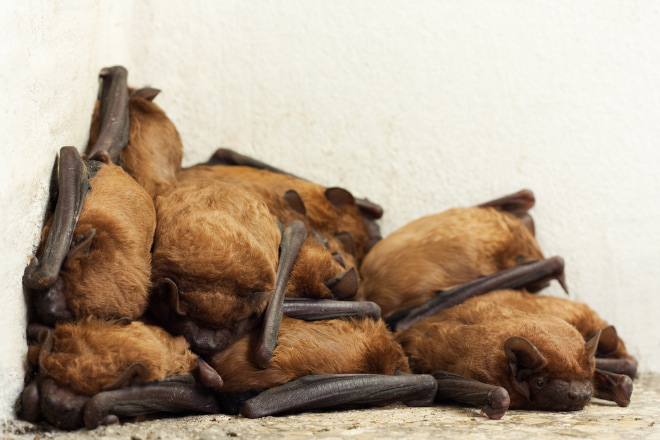How Do Bats Get In The House
How Do Bats Get In The House? Uncovering Their Secret Entry Points
Finding a bat flying around your living room can be startling, to say the least. It immediately raises the urgent question: How do bats get in the house in the first place? If you're dealing with this unsettling discovery, you're not alone. Bats are expert navigators and require surprisingly little space to squeeze into your attic, walls, or even living areas.
The truth is, bats aren't deliberately trying to terrorize your family. They are simply searching for a warm, safe, and dry environment to roost, hibernate, or raise their young. Understanding their motivations and, crucially, their preferred entry points is the first step toward effective bat exclusion.
The Secret Life of Bats and Why Your House is Appealing
Bats are nocturnal creatures that typically spend their days roosting in dark, secluded spots. While caves and hollow trees are traditional choices, modern residential homes offer highly attractive alternatives—especially the hidden, dusty voids found in attics and wall spaces.
Your home provides excellent insulation, protection from predators, and consistent temperatures. This makes a cozy attic or wall void a five-star hotel for a bat colony, providing the perfect shelter regardless of the weather outside.
Seasonal Needs: Why Summer and Winter Matter
A bat's reason for seeking shelter changes dramatically throughout the year, which directly influences when and how bats get in the house.
- Summer (Maternity Season): This is when you are most likely to notice a bat problem. Female bats form large maternity colonies to raise their pups. They seek warm attic spaces that help speed up the development of their young.
- Winter (Hibernation): During colder months, bats look for places where temperatures remain stable above freezing. Basements, wall voids, and even chimney flues offer safe places for them to enter torpor until spring arrives.
The need for shelter during these critical seasons drives them to thoroughly inspect and exploit any structural imperfection in your home's exterior.
The Size Factor: How Small Gaps Are Enough
Perhaps the most shocking fact about bat entry is just how little space they require. Unlike rodents, which gnaw or burrow their way in, bats utilize existing openings. They rely on their flexible skeletons and small bodies to squeeze through spaces you might think are impossible.
A tiny opening just 3/8 of an inch wide—roughly the size of a dime—is more than enough for many common bat species, like the Little Brown Bat, to gain entry. Since most homes have hundreds of these gaps, locating the entry point can feel like searching for a needle in a haystack.
Identifying the Top Entry Points: Where to Look First
When investigating how bats get in the house, you need to think vertically. Bats usually drop down into an opening from a higher spot. Therefore, the highest points of your home are the most vulnerable areas.
Rooflines and Eaves: The Attic Highway
The junction between your roof and the walls, known as the roofline or eaves, is the number one location for bat entry. Building materials settle and shift over time, creating perfect, tiny gaps right where the bats fly.
Look specifically for gaps beneath shingles, where the roof meets the flashing, and any area where materials intersect at odd angles. These provide direct access into your attic space.
Focusing on Fascia and Soffits
Fascia boards, which run horizontally below the roof edge, and the soffits underneath, which cover the eaves, are notorious weak spots. Wood rot, weather damage, and improperly sealed construction joints often pull these materials away from the house, creating those ideal 3/8-inch crevices.
Gaps where the soffits meet the exterior brick or siding are especially common entry points. Bats will utilize even the smallest opening to navigate into the interior voids of your walls and ultimately, your attic.
Chimneys and Vents: Easy Access Points
If you have an uncapped or improperly screened chimney, bats might find it appealing. They can drop right down into the flue. While some might get stuck, others may navigate into the furnace area or into the house through a fireplace that isn't properly sealed.
Furthermore, look at all vents: ridge vents, gable vents, and roof vents. If the screening on these vents is damaged, loose, or missing entirely, it's an open invitation for bats to slip through and access the main attic space.
Foundation and Wall Cracks: Lower Level Intrusion
Although less common than roof entry, bats can also enter through the lower levels of the house, particularly if you have a basement or crawlspace. Look for areas where concrete blocks meet the siding or where utility lines enter the structure.
Small cracks in the foundation, especially those near ground level, can allow bats access into crawlspaces. Once inside, they can easily find internal routes into the upper parts of the house via wall voids and plumbing access points.
Preventing Bat Entry: Sealing the Deal
Knowing how bats get in the house is only half the battle; the next step is prevention. Remember that bats are federally protected species in many areas, meaning they cannot be trapped and must be excluded using one-way devices during specific times of the year (usually outside of the maternity season).
Once you have confirmed that the bats have left (or if you are performing preventative sealing), follow these steps to secure your home:
- Perform a Thorough Inspection: Walk around your entire house perimeter at dusk to observe where bats might be exiting. Look for tell-tale signs like greasy rub marks or piles of droppings (guano) below tiny gaps.
- Seal Minor Openings: Use high-quality exterior caulk, expanding foam, or weather stripping to seal any hole smaller than 1/4 inch. Focus especially on trim, window frames, and utility conduits.
- Repair Structural Gaps: For gaps larger than 1/2 inch, use hardware cloth, sheet metal, or robust netting. Pay special attention to chimney flashings, soffit/fascia gaps, and where the roof meets the walls.
- Install Mesh and Caps: Ensure all vents (roof, gable, ridge) are covered with durable, fine mesh screening. Install a sturdy cap on your chimney if you don't already have one.
- Be Patient and Consistent: Because bats are creatures of habit, they will try to return to their roost. Double-check your repairs regularly, especially for the first few weeks after exclusion.
This comprehensive sealing process, often called bat proofing, is essential to ensure that your home remains bat-free long term.
Conclusion
The mystery of how bats get in the house boils down to their ability to exploit even the tiniest structural defect. They are motivated by the fundamental need for shelter, seeking out stable temperatures in your attic or wall voids, especially during maternity season in the summer and hibernation in the winter.
The most common culprits are gaps along the roofline, unsecured vents, loose fascia and soffit boards, and cracks where materials meet. If you suspect you have bats, never try to seal them in; always hire a professional specializing in humane exclusion techniques to protect these beneficial creatures while securing your home.
Frequently Asked Questions (FAQ)
- Can I seal up the entry point as soon as I see a bat?
- No. If you seal the entry point while bats are inside, they can become trapped. If it is maternity season (typically May to August), baby bats (pups) that cannot fly will be sealed away from their mothers, leading to death and potential odor issues in your walls. Exclusion must be done at the proper time of year.
- How small of a hole is required for a bat to enter?
- Bats can squeeze through openings as small as 3/8 of an inch wide, which is roughly the width of a dime. This is why thorough, professional inspection is required to identify all potential entry points.
- How can I tell the difference between bat droppings (guano) and mouse droppings?
- Bat guano tends to crumble easily into a fine powder when touched, due to their insect diet. Mouse droppings are harder and more solid. Guano is often found directly beneath the entry point on the exterior walls or concentrated in large piles in the attic.
- Is it safe to handle a bat that has flown into my house?
- Absolutely not. Never touch a bat with bare hands. While the majority of bats do not carry rabies, those that do are often sick or unable to fly and may bite if handled. Isolate the bat in a room and call animal control or a professional exclusion specialist immediately.
How Do Bats Get In The House
How Do Bats Get In The House Wallpapers
Collection of how do bats get in the house wallpapers for your desktop and mobile devices.

Exquisite How Do Bats Get In The House Scene Illustration
A captivating how do bats get in the house scene that brings tranquility and beauty to any device.

Lush How Do Bats Get In The House Artwork for Mobile
A captivating how do bats get in the house scene that brings tranquility and beauty to any device.

Stunning How Do Bats Get In The House Photo Art
A captivating how do bats get in the house scene that brings tranquility and beauty to any device.

Captivating How Do Bats Get In The House Landscape Art
Find inspiration with this unique how do bats get in the house illustration, crafted to provide a fresh look for your background.

Stunning How Do Bats Get In The House Wallpaper for Your Screen
Find inspiration with this unique how do bats get in the house illustration, crafted to provide a fresh look for your background.
:max_bytes(150000):strip_icc()/how-to-get-rid-of-bats-in-a-house-5211250_V2-c0d6b145f80f4cfe9976c69a54f07bcf.png)
High-Quality How Do Bats Get In The House View Concept
Transform your screen with this vivid how do bats get in the house artwork, a true masterpiece of digital design.

Stunning How Do Bats Get In The House Photo Illustration
Immerse yourself in the stunning details of this beautiful how do bats get in the house wallpaper, designed for a captivating visual experience.

Captivating How Do Bats Get In The House Image Nature
Find inspiration with this unique how do bats get in the house illustration, crafted to provide a fresh look for your background.

High-Quality How Do Bats Get In The House Capture in HD
Explore this high-quality how do bats get in the house image, perfect for enhancing your desktop or mobile wallpaper.

Exquisite How Do Bats Get In The House Picture Concept
This gorgeous how do bats get in the house photo offers a breathtaking view, making it a perfect choice for your next wallpaper.

Detailed How Do Bats Get In The House Scene for Desktop
Discover an amazing how do bats get in the house background image, ideal for personalizing your devices with vibrant colors and intricate designs.

Vibrant How Do Bats Get In The House Capture for Your Screen
Discover an amazing how do bats get in the house background image, ideal for personalizing your devices with vibrant colors and intricate designs.

Vivid How Do Bats Get In The House Capture Collection
Transform your screen with this vivid how do bats get in the house artwork, a true masterpiece of digital design.

Artistic How Do Bats Get In The House Photo Illustration
Immerse yourself in the stunning details of this beautiful how do bats get in the house wallpaper, designed for a captivating visual experience.

Vibrant How Do Bats Get In The House Design Collection
Discover an amazing how do bats get in the house background image, ideal for personalizing your devices with vibrant colors and intricate designs.

Detailed How Do Bats Get In The House Image Photography
Experience the crisp clarity of this stunning how do bats get in the house image, available in high resolution for all your screens.

Artistic How Do Bats Get In The House Artwork in 4K
Find inspiration with this unique how do bats get in the house illustration, crafted to provide a fresh look for your background.

Gorgeous How Do Bats Get In The House Landscape in HD
Find inspiration with this unique how do bats get in the house illustration, crafted to provide a fresh look for your background.

Lush How Do Bats Get In The House Landscape Art
Immerse yourself in the stunning details of this beautiful how do bats get in the house wallpaper, designed for a captivating visual experience.

Amazing How Do Bats Get In The House Image Art
Transform your screen with this vivid how do bats get in the house artwork, a true masterpiece of digital design.
Download these how do bats get in the house wallpapers for free and use them on your desktop or mobile devices.
0 Response to "How Do Bats Get In The House"
Post a Comment